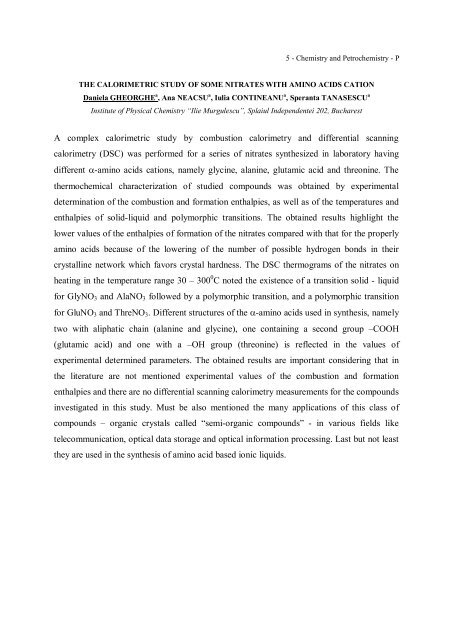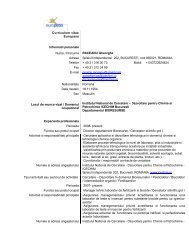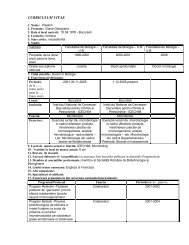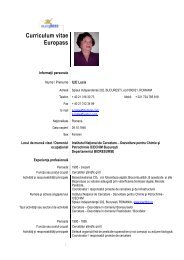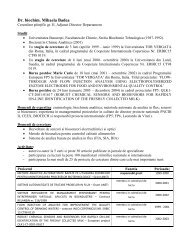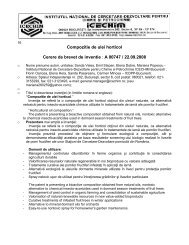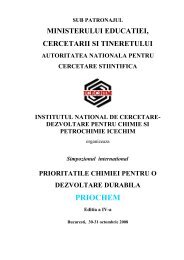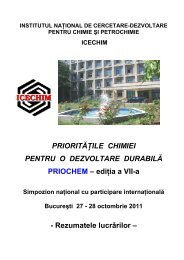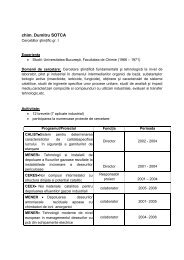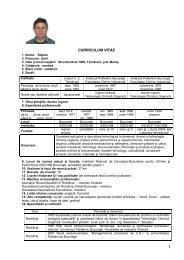INSTITUTUL NAÅ¢IONAL DE CERCETARE-DEZVOLTARE - ICECHIM
INSTITUTUL NAÅ¢IONAL DE CERCETARE-DEZVOLTARE - ICECHIM
INSTITUTUL NAÅ¢IONAL DE CERCETARE-DEZVOLTARE - ICECHIM
- No tags were found...
Create successful ePaper yourself
Turn your PDF publications into a flip-book with our unique Google optimized e-Paper software.
5 - Chemistry and Petrochemistry - PTHE CALORIMETRIC STUDY OF SOME NITRATES WITH AMINO ACIDS CATIONDaniela GHEORGHE a , Ana NEACSU a , Iulia CONTINEANU a , Speranta TANASESCU aInstitute of Physical Chemistry “Ilie Murgulescu”, Splaiul Independentei 202, BucharestA complex calorimetric study by combustion calorimetry and differential scanningcalorimetry (DSC) was performed for a series of nitrates synthesized in laboratory havingdifferent a-amino acids cations, namely glycine, alanine, glutamic acid and threonine. Thethermochemical characterization of studied compounds was obtained by experimentaldetermination of the combustion and formation enthalpies, as well as of the temperatures andenthalpies of solid-liquid and polymorphic transitions. The obtained results highlight thelower values of the enthalpies of formation of the nitrates compared with that for the properlyamino acids because of the lowering of the number of possible hydrogen bonds in theircrystalline network which favors crystal hardness. The DSC thermograms of the nitrates onheating in the temperature range 30 – 300 0 C noted the existence of a transition solid - liquidfor GlyNO 3 and AlaNO 3 followed by a polymorphic transition, and a polymorphic transitionfor GluNO 3 and ThreNO 3 . Different structures of the a-amino acids used in synthesis, namelytwo with aliphatic chain (alanine and glycine), one containing a second group –COOH(glutamic acid) and one with a –OH group (threonine) is reflected in the values ofexperimental determined parameters. The obtained results are important considering that inthe literature are not mentioned experimental values of the combustion and formationenthalpies and there are no differential scanning calorimetry measurements for the compoundsinvestigated in this study. Must be also mentioned the many applications of this class ofcompounds – organic crystals called “semi-organic compounds” - in various fields liketelecommunication, optical data storage and optical information processing. Last but not leastthey are used in the synthesis of amino acid based ionic liquids.


